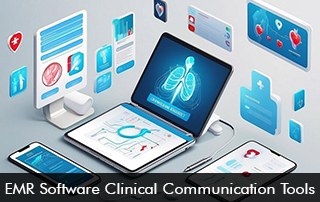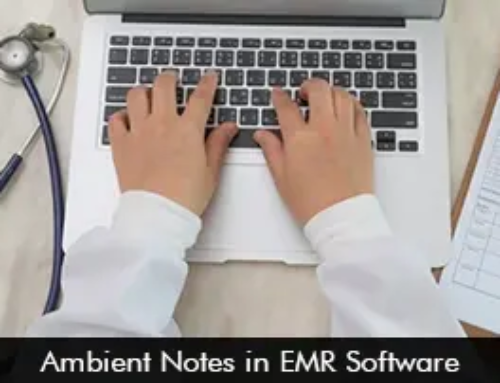Clinical communication is of top priority for healthcare organizations these days. Various Electronic Medical Records (EMR) Software clinical communication tools facilitate smooth communication and collaboration between providers, patients, and staff members. These communication functionalities are necessary to reduce any gaps in care and as a result offer high-quality patient care.
Main Communication Tools Offered by EHR Software Systems
Secure Messaging
For quick, efficient, and safe communication healthcare providers can use the HIPAA-compliant messaging platform in EMR Software to communicate in real time. The secure messaging tool has features of group chats, message tracking, and encrypted messaging, and clinicians can even attach files. These can include test or lab results.
Patient Portal Platform
The patient portal software empowers patients to feel on top of their healthcare journey. Via the patient portal facility in Electronic Health Records Software, patients can message their caregivers around the clock, update health information, view lab results, and even schedule appointments. Patients can easily log in to the portal via their smartphones and do these tasks in a breeze.
Integrated Video Conferencing
The purpose of video conferencing integration in the EHR Software system make way for remote consultations and team discussions. It supports secure video conferencing, call recording, and screen sharing. Useful for telemedicine services, particularly for patients in remote locations.
Clinical Documentation Tools
Clinical documentation tools help to streamline the tedious documentation process. Lately, generative AI integration has made clinical documentation more accurate and efficient. Providers can rely on speech-to-text technology and customized templates in the EMR Systems to spend less time charting and more time with the patient.
Interoperability Options
Robust interoperability enables the seamless exchange of patient data between different systems and healthcare providers. This helps support care coordination and offers high-quality patient care. It integrates with other software systems and health information exchanges (HIEs). Cloud-based EHR Software offers easy data sharing and seamless data access.
Challenges of Communication Tools in EMR Software
- Integration problems – Ensuring complete integration of communication tools with other EMR features.
- User Training – To use the communication tools efficiently and reap maximum advantages users require thorough training.
- Cost – It can be costly to implement and maintain sophisticated communication technologies, particularly for smaller practices.
Moving Ahead
Modern healthcare organizations utilize these powerful communication tools in Electronic Medical Records Software for effortless collaboration and maintaining positive relationships with patients.








